Mendelssohn on Mull: Close-up with Chamber Music | reviews, news & interviews
Mendelssohn on Mull: Close-up with Chamber Music
Mendelssohn on Mull: Close-up with Chamber Music
The classical Hebridean festival allows thrilling proximity to the musicians

Getting to Mull is an improbably romantic journey to classical music-making. One can easily understand why Mendelssohn was so affected by his experiences in Scotland – and Mull. On the three-hour train journey from Glasgow one sheds the habits of everyday life: the train winds through thickets of Forestry Commission plantations, which suddenly open out into wild panoramas of mountains and lochs, or a dramatic ruined castle against the skyline.
The concept of this little festival is very simple: young musicians at the start of their professional lives gather on the Hebridean island off Scotland’s Argyll coast, to make music with highly experienced players of chamber music. They meet, do an intense day and a half of preparation with their ensembles, then spend a week honing the music while giving concerts every day to audiences in various locations around the island. Twelve concerts in nine venues: the tiny Creich Church seats about 50 max, Duart Castle’s Great Hall around 100 at the other end of the scale, and there’s not a seat to be had anywhere.
The experience for the audience is intense and concentrated: you sit enveloped in the sound, engaged as an integral part of the intimate musical conversation between the players. I’ve long been exasperated by chamber music concerts in big concert halls; even in the sacred Wigmore Hall it’s a contradiction in terms. You can hardly describe it as chamber music when there are 600 and more gathered; nor is it anything about music-making when the players are rather “performing” the piece, belting it out to the back wall of the hall. It is quite another understanding to be so close that you are able physically to feel the pulse, the phrasing and the give and take between the players; to hold your collective breath at the quietest of pianissimos.
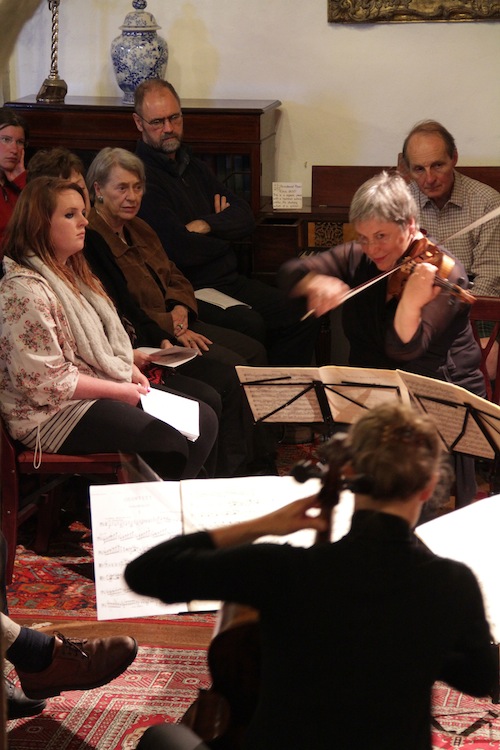 For the young players the week is an intense introduction to the business of being a musician, making music with colleagues, as opposed to a soloist performing spotlit on the high wire. They are budding professionals, already with starry pedigrees from their conservatoires: first-class degrees, prizes and all manner of achievements, some even with top honours from Oxbridge as well. And they learn this business of making music playing alongside, sitting next to, seasoned professional colleagues who have chosen to make their careers in the chamber music field.
For the young players the week is an intense introduction to the business of being a musician, making music with colleagues, as opposed to a soloist performing spotlit on the high wire. They are budding professionals, already with starry pedigrees from their conservatoires: first-class degrees, prizes and all manner of achievements, some even with top honours from Oxbridge as well. And they learn this business of making music playing alongside, sitting next to, seasoned professional colleagues who have chosen to make their careers in the chamber music field.
The present artistic director is Levon Chilingirian – whose Chilingirian Quartet is this year celebrating 40 years of professional life. When he started his quartet, he was breaking new ground (along with the Lindsay Quartet a year or so earlier) in actually choosing to make his career with chamber music rather then as a soloist, for which he certainly had the talent. We thought he was crazy at the time. With Levon this year were two of his quartet colleagues, Ronald Birks and Suzie Mészáros, along with Marcia Crayford (long-time leader of the Nash Ensemble) and cellist Stephen Orton (once with the Delmé Quartet and now the Academy Chamber Ensemble).
The third element in the mix is the island of Mull itself which unfailingly casts a spell on visitors - not least on Mendelssohn himself who stayed on the island during his life-changing visit to Scotland when a young man, and took the regulation tourist boat trip to the island of Staffa and its famous Fingal’s Cave.
Every day, each group of musicians would set out from the festival base in Tobermory to drive miles to their concert venues through the most astonishingly dramatic scenery: steep mountainsides, empty valleys, lochs, waterfalls, eye-watering vistas of the sea. For young players whose lives have necessarily been focused intently on the business of mastering their instruments, months can pass in a welter of mere notes within the four walls of their practice room while the soul becomes ever more arid, starved of any spiritual renewal.
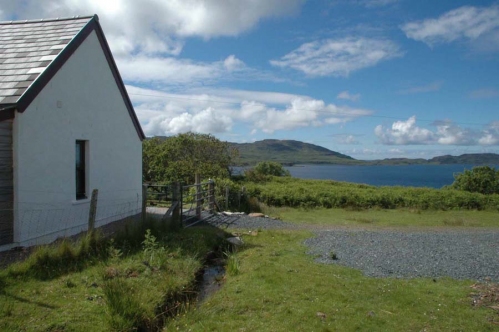 Certainly you could hear this extra musical dimension developing through the week: while the standard of performance was pretty hot at the beginning, as the days went past, the performances became ever more liberated, players taking risks, being daring with dynamics, phrasing, rhythmical drive. Part of that, of course, is to do with getting to know each other as musicians, but also being able to infuse their music with the experience of being surrounded by such a powerful environment. It may sound cheesy, but I was told of a young player who simply couldn’t understand the raison d’être of the festival, until she took herself off in despair to sit alone high up on some hill looking at the view, where enlightenment dawned and she could enthusiastically continue. (Picture right, bacmor.co.uk.)
Certainly you could hear this extra musical dimension developing through the week: while the standard of performance was pretty hot at the beginning, as the days went past, the performances became ever more liberated, players taking risks, being daring with dynamics, phrasing, rhythmical drive. Part of that, of course, is to do with getting to know each other as musicians, but also being able to infuse their music with the experience of being surrounded by such a powerful environment. It may sound cheesy, but I was told of a young player who simply couldn’t understand the raison d’être of the festival, until she took herself off in despair to sit alone high up on some hill looking at the view, where enlightenment dawned and she could enthusiastically continue. (Picture right, bacmor.co.uk.)
The violinist Leonard Friedman, who started the festival, recognised this particular benefit when he brought his first players to Mull in 1988: apart from the musical experience for young and older players, he wanted everyone to discover their sense of “fantasy” and use it to inspire their musical expression.
There were three groups this time: Levon mentoring a quintet with two violas, Ronnie and Stephen with another two-viola quintet, while Marcia and Suzie worked with a quartet which had actually developed into an ensemble (the Aros Quartet) after meeting and working together in Mull in 2010. The music ranged from Haydn, Mozart and Beethoven, through Schubert’s C major Quintet, to the Bruckner Quintet and the Sextet from Richard Strauss’s opera Capriccio. Every afternoon they refined details, every evening they performed to a different audience in a different venue.
One evening, in Tobermory, each group played a selection of their repertoire to the others – and of course a packed audience, even standing at the back. At another concert, in the ancient and mystic setting of Iona Abbey, each group played slow movements from their repertoire, and at the final evening’s Classical Ceilidh, where everyone played their party pieces, they ended the show as a massed string orchestra with the 12-year-old Mendelssohn’s String Symphony No 11, in F.
Each night after the concerts the excitement continued into the early hours at the local hostelry (last orders at 1am) and one evening there was virtuoso playing of Scottish reels in the snug. It’s said that every house in the Highlands has its fiddle and there’s always playing of traditional tunes. So the young string players of Mull also have a place in this festival, studying for a week and also giving their concert – to enthusiastic acclaim. It must be wonderful to study with teachers who can play a mean reel as well as bend the tunes as gracefully as Stéphane Grappelli, while putting across the basics of whole bows, long notes, scales and arpeggios.
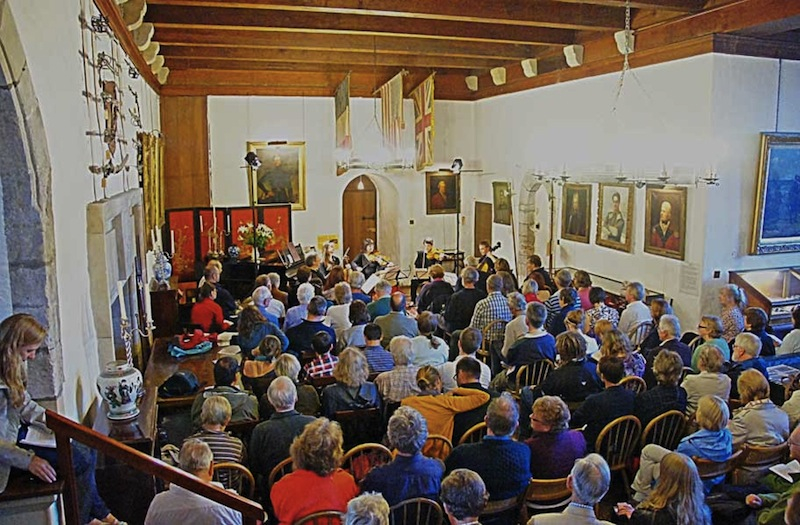
It so happens that the European musical map is dotted with small chamber music events in unusual or dramatic environments, which, mostly, feature glamorous soloists doing something different from their high-profile normal lifestyle. I often think of these as a kind of “detox” event for them, the players having a great time with their mates, hacking through some choice repertoire in front of their adoring and moneyed friends who pay fortunes for the spectacle of great names unusually gathered together on stage. Or the great names give public masterclasses in front of the same audience – and there are queues of eager students competing to pay to put themselves through this doubtful experience to have their contact with the star enhancing their CV.
But Mendelssohn on Mull is about something quite other: to find out about the purpose of making music, of communicating music. Not merely “performance”. The mentors become part of the ensemble with the young professionals: they work at the music as equals – as far as that’s possible. There’s give and take, exchange of opinions – even though the mentors obviously bring decades of experience to share with their young friends. It’s also done in private: young players have the freedom to try out new ideas without the worry of making fools of themselves in front of an audience. And every evening they can test the fruits of this work in progress in performance – to be further developed at the next rehearsal.
Furthermore, each of the mentors comes from a tradition of playing that is not very fashionable in these days of superstars who do their music in big, overblown gestures. Suzie Mészáros talked about making the music “speak”: about a conversation, the emphasis from consonants, of creating the shape of a musical phrase as one might pitch the shape of a spoken phrase, of the gesture in making an up-bow phrase balancing that of the down-bow. And practical details: “Think of the length of the bow as a comfortable limit for the notes you’re playing – and that will guide the tempo…”
Stephen Orton advising on how to “lift” the cellos’ bass line: “Crotchets can be off the ground,” asking for a dynamic intensity from the group to support and help him through long slow notes. Ronnie Birks noticing the various lengths of semiquaver being offered by the players in the Schubert Quintet: “Keep steady divisions of the bar in your mind"; Marcia Crayford advising the leader of her group at the start of a work: “Breathe in, feel the music already moving before you start – think warm,” and using her whole body to illustrate. More often, you could see information being imparted just through the playing: intelligent listening and instant understanding.
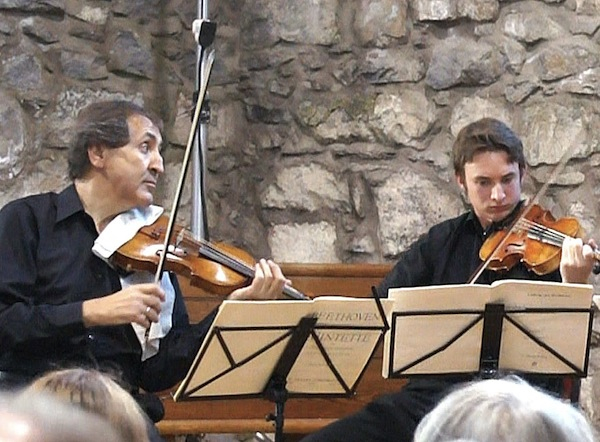 The players come through recommendation: either from their professors, or from having been spotted at auditions. Levon (pictured right with Stephen Curlett), who couldn’t be a better model of the value of spending a professional lifetime playing chamber music, is passionate about the value of this kind of music-making.
The players come through recommendation: either from their professors, or from having been spotted at auditions. Levon (pictured right with Stephen Curlett), who couldn’t be a better model of the value of spending a professional lifetime playing chamber music, is passionate about the value of this kind of music-making.
“The newcomers start with hardly any experience of chamber music," he says. "They’re reticent about their playing – and nervous about working with the others and the pressure of the concerts. We place them in each of the groups where they are among players who have been before – people come back for about three years and about 60 per cent of the group are returners. And they come back to work with a different mentor each year, and with different colleagues… What happens is they start to develop a responsibility for their own artistic expression in respect of working with the ensemble, and taking that expression out to public performance.”
It’s a different mentality from playing in an orchestra with a conductor directing proceedings – or to that of the soloist. It has often happened that an extremely proficient player comes to Mull expecting to be the first fiddle to find they’re actually assigned the second desk because their need is to learn how to listen and engage with their colleagues, to understand that the music works in several layers – there’s harmonic rhythm, there’s counterpoint, there’s give and take and it all works together for the greater whole. The young players are expected to come having studied the music – which means not only getting the notes under the fingers – but also studying the scores.
From the players’ biographies, the process seems to stick: they all say they play chamber music.
No one pays a penny for this: travel and accommodation is all taken care of – and there’s even a small stipend to take care of incidental expenses, such as Tobermory’s excellent late-night fish and chips bar. Or the odd dram at the MishNish hotel – the festival’s unofficial HQ.
For the audience, there’s no charge for the concert ticket, though if one is minded, having enjoyed the music, there is opportunity to give a donation towards costs at the end. People are astonishingly generous. It’s not just that Mull doesn’t get too much music because it’s distant – a long journey from the big cities - the music-making has a very special quality which intensifies as the week progresses and it’s a quality which could never be found in a regular concert hall (with 600-plus around you in the intimate audience).
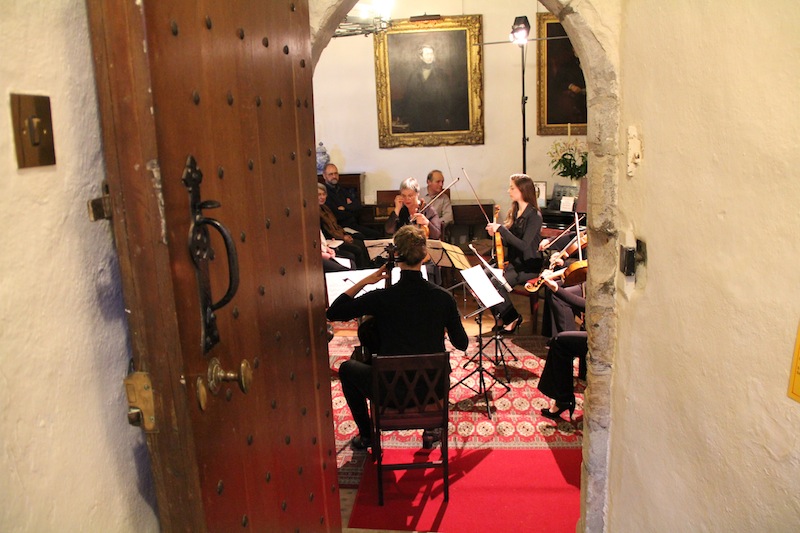 At the abbey church on Iona, St Columba’s island off the south coast of Mull, the programme was a series of slow movements from the rep: including Beethoven’s Quartet in F, Op 18 No 1, his C major Quintet, the Mozart C minor Quintet and Schubert’s C major Quintet D 956… Levon had told me that strange things can happen there. A cellist once found his bow arm stayed by some mysterious force, he simply couldn’t play. The atmosphere is palpable.
At the abbey church on Iona, St Columba’s island off the south coast of Mull, the programme was a series of slow movements from the rep: including Beethoven’s Quartet in F, Op 18 No 1, his C major Quintet, the Mozart C minor Quintet and Schubert’s C major Quintet D 956… Levon had told me that strange things can happen there. A cellist once found his bow arm stayed by some mysterious force, he simply couldn’t play. The atmosphere is palpable.
I sat at the back of the building, which was packed with a mixed bag of people: the Mendelssohn on Mull regulars, the religious pilgrims to this cradle of Celtic Christianity, day-trippers sheltering from the rain, walkers in mountain gear, lots of children. At that distance, when the music started, the sound could be described as resembling a cloud of incense rising: ephemeral, yet demanding silence and attention. I could feel a flow of concentration moving down the building to the players. Almost a tsunami of concentration, and even restless children were quietened.
And when the measured heartbeats of the Schubert started underneath that achingly lovely and sad melody, so did the tears: I have never been part of an audience so undone by music. Nor seen players so affected. Which is what music-making should be about.
- Two documentaries about this year’s Mendelssohn on Mull festival with performances from the concerts and conversation with the artists are being broadcast by BBC Radio Scotland’s programme Classics Unwrapped this Sunday 17 and 24 July at 5pm. Can be listened to online also
Share this article
The future of Arts Journalism
You can stop theartsdesk.com closing!
We urgently need financing to survive. Our fundraising drive has thus far raised £49,000 but we need to reach £100,000 or we will be forced to close. Please contribute here: https://gofund.me/c3f6033d
And if you can forward this information to anyone who might assist, we’d be grateful.

Subscribe to theartsdesk.com
Thank you for continuing to read our work on theartsdesk.com. For unlimited access to every article in its entirety, including our archive of more than 15,000 pieces, we're asking for £5 per month or £40 per year. We feel it's a very good deal, and hope you do too.
To take a subscription now simply click here.
And if you're looking for that extra gift for a friend or family member, why not treat them to a theartsdesk.com gift subscription?
more Classical music
 Hallé John Adams festival, Bridgewater Hall / RNCM, Manchester review - standing ovations for today's music
From 1980 to 2025 with the West Coast’s pied piper and his eager following
Hallé John Adams festival, Bridgewater Hall / RNCM, Manchester review - standing ovations for today's music
From 1980 to 2025 with the West Coast’s pied piper and his eager following
 Kaploukhii, Greenwich Chamber Orchestra, Cutts, St James's Piccadilly review - promising young pianist
A robust and assertive Beethoven concerto suggests a player to follow
Kaploukhii, Greenwich Chamber Orchestra, Cutts, St James's Piccadilly review - promising young pianist
A robust and assertive Beethoven concerto suggests a player to follow
 Robin Holloway: Music's Odyssey review - lessons in composition
Broad and idiosyncratic survey of classical music is insightful but slightly indigestible
Robin Holloway: Music's Odyssey review - lessons in composition
Broad and idiosyncratic survey of classical music is insightful but slightly indigestible
 Classical CDs: Wolf-pelts, clowns and social realism
British ballet scores, 19th century cello works and contemporary piano etudes
Classical CDs: Wolf-pelts, clowns and social realism
British ballet scores, 19th century cello works and contemporary piano etudes
 Bizet in 150th anniversary year: rich and rare French offerings from Palazzetto Bru Zane
Specialists in French romantic music unveil a treasure trove both live and on disc
Bizet in 150th anniversary year: rich and rare French offerings from Palazzetto Bru Zane
Specialists in French romantic music unveil a treasure trove both live and on disc
 Scottish Chamber Orchestra, Ibragimova, Queen’s Hall, Edinburgh review - rarities, novelties and drumrolls
A pity the SCO didn't pick a better showcase for a shining guest artist
Scottish Chamber Orchestra, Ibragimova, Queen’s Hall, Edinburgh review - rarities, novelties and drumrolls
A pity the SCO didn't pick a better showcase for a shining guest artist
 Kilsby, Parkes, Sinfonia of London, Wilson, Barbican review - string things zing and sing in expert hands
British masterpieces for strings plus other-worldly tenor and horn - and a muscular rarity
Kilsby, Parkes, Sinfonia of London, Wilson, Barbican review - string things zing and sing in expert hands
British masterpieces for strings plus other-worldly tenor and horn - and a muscular rarity
 From Historical to Hip-Hop, Classically Black Music Festival, Kings Place review - a cluster of impressive stars for the future
From quasi-Mozartian elegance to the gritty humour of a kitchen inspection
From Historical to Hip-Hop, Classically Black Music Festival, Kings Place review - a cluster of impressive stars for the future
From quasi-Mozartian elegance to the gritty humour of a kitchen inspection
 Shibe, LSO, Adès, Barbican review - gaudy and glorious new music alongside serene Sibelius
Adès’s passion makes persuasive case for the music he loves, both new and old
Shibe, LSO, Adès, Barbican review - gaudy and glorious new music alongside serene Sibelius
Adès’s passion makes persuasive case for the music he loves, both new and old
 Anja Mittermüller, Richard Fu, Wigmore Hall review - a glorious hall debut
The Austrian mezzo shines - at the age of 22
Anja Mittermüller, Richard Fu, Wigmore Hall review - a glorious hall debut
The Austrian mezzo shines - at the age of 22
 First Person: clarinettist Oliver Pashley on the new horizons of The Hermes Experiment's latest album
Compositions by members of this unusual quartet feature for the first time
First Person: clarinettist Oliver Pashley on the new horizons of The Hermes Experiment's latest album
Compositions by members of this unusual quartet feature for the first time

Add comment